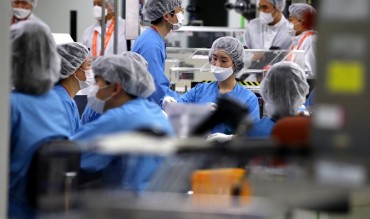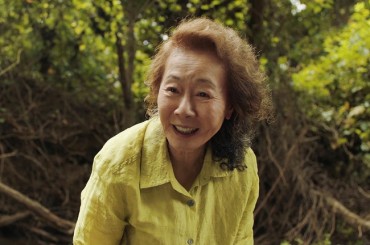
This photo shows a digital reproduction of the Gwanggwato the Great Stele, a memorial stele for the tomb of Gwanggaeto the Great of Goguryeo, on display at the National Museum of Korea in central Seoul on Jan. 24, 2024. (Image courtesy of Yonhap)
SEOUL, Jan. 24 (Korea Bizwire) — The colossal tombstone of King Gwanggaeto the Great, undoubtedly the greatest conqueror in Korean history, has been restored digitally for display at a national museum in Seoul more than 1,600 years after its erection.
The National Museum of Korea unveiled a digital reproduction of the Gwanggwato the Great Stele, alongside rare original stone rubbings, at the facility in central Seoul on Wednesday.
The monument was erected in 414 by King Jangsu of Goguryeo (37 B.C.-A.D. 668) in honor of his late father, Gwanggaeto the Great, the 19th monarch of the kingdom.
Located near the tomb of Gwanggaeto in today’s Jian, northeast China, which was the capital of Goguryeo at that time, it stands as the largest engraved stele in the world.
The monument is a crucial resource for studying the history of Northeast Asia, particularly the Goguryeo Kingdom, during the fourth and fifth centuries.
The inscriptions on its four sides, totaling 1,775 characters, delve into the kingdom’s founding myth, the king’s ascension to the throne, his triumphs and regulations governing the king’s tomb management.
Towering at a height of 7.5 meters, or 8 meters when including the base, an LED pillar with a width of 2.6 meters offers visitors a 360-degree view of the monument reproduced based on various photographs and video footage as its original state.
The Cheongmyeong edition of the original stone rubbings, which the museum obtained last year, is on display at its exhibition hall dedicated to the Goguryeo period.
They hold rarity and high historical value as they predate the application of lime to the inscription.
There are reportedly only 10 sorts of original stone rubbings worldwide.
(Yonhap)






